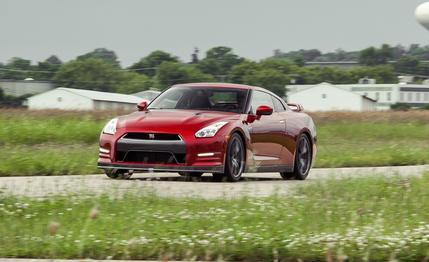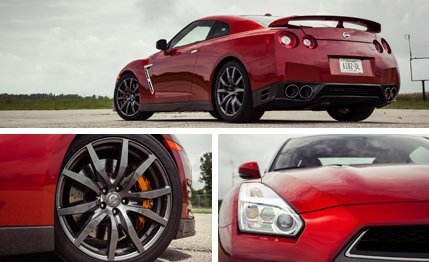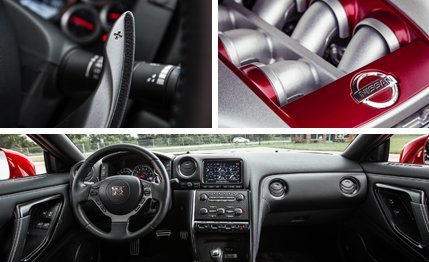
 Instrumented Test
Instrumented Test
When it comes to the GT-R, Nissan appears to take its cues from 1950s Detroit. Not that the twin-turbo, all-wheel-drive robo-racer has anything in common with the lead sleds from Motown's heyday. Rather, we’re fascinated that Nissan has made substantial updates to the GT-R in almost every model year since its 2009 introduction. And since 2015 is a wholly different year than 2014, there’s yet another round of changes for the 2015 Nissan GT-R.
This Year is the Year!
With all of the perpetual tweaking and tuning over the years—changing the chassis calibration, upping the horsepower, sharpening the steering—we can’t help but wonder if Nissan is struggling to control the monster it created. Does it mean that the Japanese company still hasn’t dialed in the suspension after six years of fiddling? And is this the year Nissan will finally get it right?


While the new 2015 Nissan GT-R NISMO gives a shot of growth hormone to the already steroidal Godzilla, the standard (dubbed Premium) model receives a dose of Xanax with a revised suspension that promises both better ride quality and improved grip. There are new spring rates and re-valved dampers, plus a softer front anti-roll bar and bushings. Nissan promised us a more compliant car with previous updates, but this year’s changes are different in that they’re actually perceptible from the driver’s seat. Where the last car followed grooves and ruts in the road like a rail-bound locomotive, this new car tracks free and straight on the highway. With the Bilstein dampers in their Comfort setting, the car rides, well, comfortably.
Still the Obstinate, Noisy Beast We Know and (Mostly) Love
Not that Godzilla has gone soft. In corners, the 2015 Nissan GT-R is as flat, fast, and fearless as every R35-chassis GT-R that's come before. That said, Nissan's claim of increased grip wasn't detectable on our 300-foot skidpad. We recorded roadholding of 0.95 g, no better than the 2013 GT-R we tested. (the NISMO and the Track Edition GT-R wear NR1-spec tires that elevate grip beyond 1.0 g.) The softer suspension should improve grip on lumpy pavement and in transient maneuvers, but it hasn’t done anything to rectify the GT-R’s pervasive understeer at the limit. The front tires prefer to skate over the pavement even when you lift off the throttle abruptly or brake while cornering.
Despite a new Bose active-noise-cancellation system, the GT-R remains a cacaphonous beast. The fat Dunlop tires fill the cabin with the roar of a 600-ton Airbus taking off. The six-speed dual-clutch automatic transmission clunks and clacks like a bowling-ball return spitting out three 17-pounders. The boosted engine alternately sucks and blows with the force of Mega Maid. Shy of donning a pair of Bose noise-canceling headphones, there’s no way to mute a car with this much brute-force engineering.


There are no powertrain changes for 2015—not that we’re complaining. The twin-turbo 3.8-liter V-6 makes a heady 545 horsepower and 463 lb-ft of torque. With the aid of the viciously effective launch control, we recorded the blitz to 60 mph in 3.0 seconds. We’ve managed 2.9 seconds in other GT-Rs, but the 11.2-second sprint to 1320 feet makes this 2015 model as quick through the quarter-mile as any GT-R we've tested, including the 600-hp 2015 Nissan GT-R NISMO.
Better, but What if the Best Is Yet to Come?
While we still bemoan the recalcitrant handling behavior, the $103,365 GT-R remains one of the best values extant simply for the raw acceleration and speed it offers. With the additional dimension of a civilized ride, there’s no question that the 2015 edition of the Nissan GT-R is the company’s best execution of the car so far. Now we want to see what next year will bring.